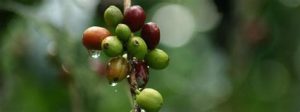National Geographic
Biosphere Reserves
People play an important part in maintaining the flow of energy in the biosphere. Sometimes, however, people disrupt the flow. For example, in the atmosphere, oxygen levels decrease and carbon dioxide levels increase when people clear forests or burn fossil fuels such as coal and oil. Oil spills and industrial wastes threaten life in the hydrosphere. The future of the biosphere will depend on how people interact with other living things within the zone of life.
In the early 1970s, the United Nations established a project called Man and the Biosphere Programme (MAB), which promotes sustainable development. A network of biosphere reserves exists to establish a working, balanced relationship between people and the natural world.
Currently, there are 563 biosphere reserves all over the world. The first biosphere reserve was established in Yangambi, Democratic Republic of Congo. Yangambi, in the fertile Congo River Basin, has 32,000 species of trees and such endemic species as forest elephants (Loxodonta cyclotis) and red river hogs (Potamochoerus porcus). The biosphere reserve at Yangambi supports activities such as sustainable agriculture, hunting, and mining.
One of the newest biosphere reserves is in Yayu, Ethiopia. The area is developed for agriculture. Crops such as honey, timber, and fruit are regularly cultivated. However, Yayu’s most profitable and valuable resource is an indigenous species of plant, Coffea arabica. This shrub is the source of coffee. Yayu has the largest source of wild Coffea arabica in the world.
FAST FACT
Biosphere 2
In 1991, a team of eight scientists moved into a huge, self-contained research facility called Biosphere 2 in Oracle, Arizona. Inside an enormous, greenhouse-like structure, Biosphere 2 created five distinct biomes and a working agricultural facility. Scientists planned to live in Biosphere 2 with little contact with the outside world. The experiments carried out in Biosphere 2 were designed to study the relationship between living things and their environmentand to see whether humans might be able to live in space one day.
The mission was supposed to last 100 years, with two teams of scientists spending 50 years each in the facility. Instead, two teams made it just four years, and the scientists moved out in 1994. Though the live-in phase is over, research is still taking place in Biosphere 2, with a main focus on global warming.
